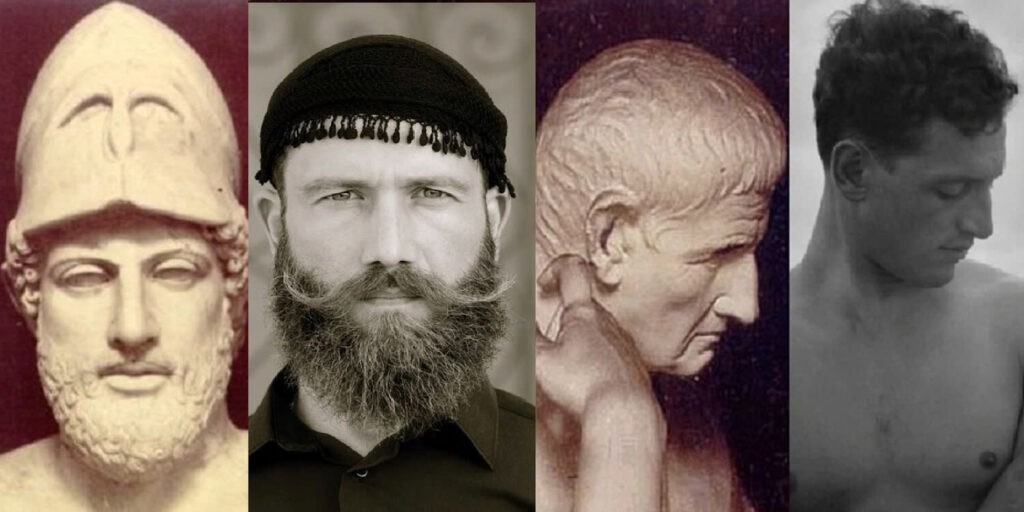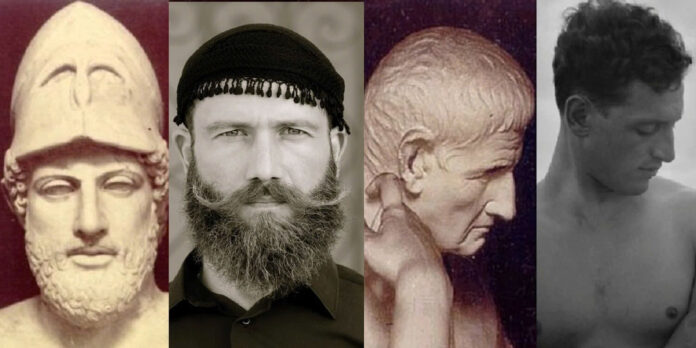Understanding Greece’s Racial Heritage

The exploration of racial and cultural traits in ancient civilizations has intrigued historians, anthropologists, and art historians for generations. In the case of Greece—a civilization with a profound historical impact—the question of racial makeup and its continuity through the ages has sparked considerable debate. By examining physical anthropology, literary records, and artistic representations, we can gain a comprehensive understanding of the racial continuity in Greece from ancient times to the present.
Racial Continuity in Greece: Key Elements

One of the primary conclusions drawn from physical anthropology is that Greece has exhibited remarkable racial continuity throughout its history. Both ancient Greeks and their modern descendants primarily comprise three key racial elements: Dinaric, Alpine, and Mediterranean. These types remain prevalent in Greece today, indicating a continuity that spans millennia. Notably, there is no significant difference in racial types among ancient Greek aristocrats, commoners, and criminals, suggesting a consistent demographic across various social strata.
- Mediterranean Type: Characterized by dark hair and eyes, a long skull, a narrow face, and a lean physique, this type is associated with the earliest creators of civilization in the Fertile Crescent and extends from the Atlantic to India.
- Dinaric and Alpine Types: The Dinaric type features a long face, beaky nose, and tall stature, while the Alpine type presents a stockier build with a broad skull and brown hair, common in Central Europe and extending into Greece.
This evidence supports modern findings, suggesting that the people of Greece have retained these core racial elements over thousands of years.
Diversity in Ancient Greek Literature

Greek literature provides further insight into the racial diversity of the population. Ancient texts mention both brunet and fair individuals, similar to the variation seen in modern Greece. Importantly, ancient Greeks did not attribute any form of superiority to one type over another, indicating that, unlike in some later cultures, physical appearance was not linked to social or cultural dominance. This contrasts with assumptions in other parts of Europe, where fair complexions often became associated with nobility. In Greece, a balanced view prevailed, with brunet and fair individuals coexisting without favoritism in historical narratives or artistic representations.
Artistic Representations of Ancient Greeks

Ancient Greek art, renowned for its beauty and precision, serves as valuable visual documentation of the population’s appearance. Statues, frescoes, and pottery predominantly depict individuals with brunet features—dark hair and eyes—while only a small minority are shown as fair-haired. Even those depicted as fair are rarely as light as Northern Europeans, and their physical characteristics align closely with their brunet counterparts. This observation reinforces the notion that the ancient Greeks were largely Mediterranean in appearance, with some variation but little deviation from this norm.
Self-Perception and Racial Identity
Ancient Greek self-descriptions, as well as their perceptions of other peoples, further clarify their racial identity. The Greeks viewed themselves as intermediate in pigmentation between the fair-haired “barbarians” of the North and the darker-skinned peoples of Africa and the Near East. This self-identification reflects the geographical and cultural reality of Greece, situated at the crossroads of Europe, Africa, and Asia. Modern Greeks continue to exhibit this intermediate pigmentation, further solidifying the idea of racial continuity in the region.
Conclusion: A Legacy of Racial Continuity

In summary, a thorough examination of anthropological, literary, and artistic evidence reveals clear racial continuity in Greece from antiquity to the present. The predominance of Dinaric, Alpine, and Mediterranean racial types has remained consistent, with both brunet and fair individuals present throughout history. Greek art and literature illustrate a society that valued these traits equally, without elevating one type over another. Descriptions of the Greeks suggest they viewed their pigmentation as intermediate between the paler peoples of the north and the darker peoples of the south—a perspective that endures today.
Through these findings, we can appreciate the enduring legacy of the ancient Greeks, reflected not only in their cultural and intellectual contributions but also in the physical characteristics of their descendants, who embody the diverse yet unified racial composition of their ancestors.

